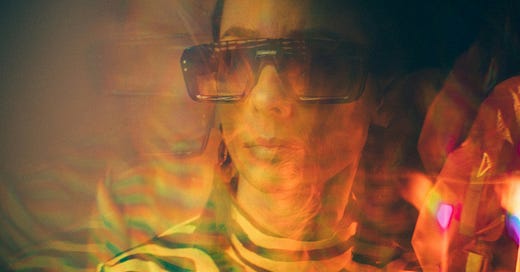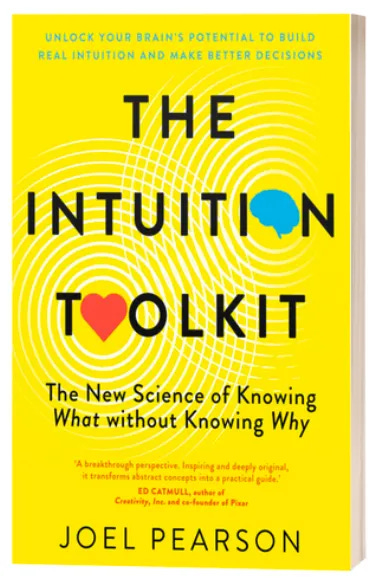Trauma Without Flashbacks: Does Aphantasia Protect Against PTSD?
The relationship between mental imagery (or lack thereof) and trauma
Hello dear reader,
Have you ever wondered why some people seem to walk away from a trauma unscathed, while others suffer anxiety and flashbacks on an ongoing basis?
There’s many different theories as to why some people are more susceptible to PTSD than others — whether it’s the role of grit, general resilience or level of sensitivity to stimuli.
But, there’s another factor I don’t hear spoken about as often: Your ability (or lack thereof) to conjure images in your mind’s eye.
Yes, as it turns out, the strength of your mental imagery predicts whether you’re likely to have PTSD flashbacks — and, this has intriguing implications for people with aphantasia.
The trauma and imagery connection
Mental imagery and re-traumatisation (that is, reliving that initial stress response from a traumatic event on an ongoing basis) go hand in hand.
This is why we have the Tetris effect. Playing the block puzzle video game after a traumatic event has been found to reduce the intensity of visual flashbacks for six months afterwards. This is because it’s so visually stimulating and involves mental spatial manipulations that it drains all of your imagery processing faculties (so the troubling imagery related to the traumatic event doesn’t get fully encoded).
The research shows that those who visualise experiences strongly and vividly (such as those with hyperphantasia) may be more prone to PTSD. So, naturally, we set out to test if the opposite is also true.
The upside of aphantasia
This is one rare instance where having aphantasia can actually have a directly positive effect — based on what we’ve seen in our lab.
In our first study, we got two groups — those with typical mental imagery, and those with aphantasia — into a small, dark room. On a computer monitor, they read out a variety of scary scenarios: such as, they’re swimming in the ocean and they see a dark shadow move underneath them, then something bumps their foot. This, importantly, was text only — no visuals.
As they were reading these, we used sweat conductance as a proxy for emotional arousal. We found those with typical imagery were getting more and more anxious as they read the story, while the aphantasia group showed a flat line on average. Conversely, in a control experiment, we saw a similar level of emotional arousal amongst both groups, when we showed them both stress-provoking images, eg. images on the screen, no text.
This suggests that the aphantasia group were less likely to have an ongoing stress response after being exposed to stressful written scenarios — not because they were less emotional in general, but because they didn’t seem to have the mental imagery to amplify those emotions.
Whether or not you’re a visual person, you may like to watch the recent video I did on this topic.
We wanted to know how long-lasting this effect would be. So, in another more recent study, we again had two groups come into the lab and watch a short video depicting a stressful scenario like a car crash (yes, being a participant in our lab is lots of fun!!) Then, we sent them home for a full week with a digital app that prompted them to report how many times per day they thought about that video. We found that those with typical imagery had a significantly larger number of those intrusive memories from the video compared to those with aphantasia.
See no evil….hear no evil, feel no evil?
But… that doesn’t mean those with aphantasia get off completely scot-free. Nor does having aphantasia mean they’re completely immune to PTSD. I’ve met plenty of people with both, so this certainly isn’t to say they’re mutually exclusive.
And as always, this is a good time to point out that when Im talking about data from studies, Im almost always just talking about the average, the mean etc. which by definition will not apply to individuals.
Just because someone doesn’t have visual imagery, doesn’t mean they won’t experience triggers related to other sensory stimuli. Think, the veteran hearing an air strike signal or the burns survivor smelling smoke. These are very real associations that can take the sufferer to a rather unpleasant place. But remember that aphantasia often presents as full multisensory aphantasia - check out this video if you are curious about that.
And interestingly, in our PTSD model study with the video, we did find that people with aphantasia did experience intrusions in the week after watching the stressful video. But, rather than being visual flashbacks, they tended to materialise as more symbolic or auditory intrusions. Overall, these participants with aphantasia seemed to find these non-visual ‘flashbacks’ less emotionally-charged and less distracting than the participants with mental imagery. But, they were there nonetheless.
There’s no doubt that if you have mental imagery, you’re more likely to have anxiety or PTSD that is reinforced through the mental imagery. But, it begs the question — should we categorise post-incident distress without mental imagery as a disorder that’s distinct from PTSD? In people with aphantasia, does this perhaps manifest less as an all-encompassing, immersive flashback, but more as a low-level, constant rumination that never goes away?
I’d love to hear what you think.
How does the trauma come back to life for you? Does it happen in a non sensory manner?
Mental meanderings
Does PTSD manifest in a different way for those without mental imagery?
Should we categorise this as a different condition?
What do you find scarier — reading a scary story, or watching a horror movie?
Let us know in the comments below!











I have multi sensory aphantasia. [I do have an internal monologue that never shuts up, but I cannot make myself imagine a sound such as a siren, birds, or my husband’s voice. When I “hear” a song in my head it lacks music and all of the vocals are my own voice. Even in my own head I cannot carry a tune.]
When I experience a flashback of my own trauma, there are no visuals, but there is an intense sense of panic and fear. The intensity is the same as if I was experiencing the event all over again. Even without a visual component, every flashback is devastating and affects my mood and sleep afterwards— usually for weeks on end.
I don’t doubt that if my trauma was caused by merely witnessing something bad then my aphantasia would be protective. That only makes sense. But my trauma was not related to a visual experience. I don’t care to discuss the details online, but I know that even though 50 years have passed, certain seemingly trivial things put me right back into those moments of terror and that panic. Aphantasia may be protective in some/many circumstances, but there are traumas so unspeakably horrific that a blind mind’s eye can’t diminish.
I have total multi sensory aphantasia, and chronic PTSD as well as cPTSD, that is treatment resistant to all trauma based modalities as they require some level of sensory memory recall and/or imagination. Pete Walker explains emotional flashbacks well; our body and nervous system are both back in the trauma, despite not having any sensory clues as to where we are, what is happening, how old we are, etc.
Also, studies show aphantasia does NOT protect against PTSD.
https://aphantasia.com/article/mental-imagery-ptsd-neurodiversity-treatment/?srsltid=AfmBOoqXoO2pU0noH2xqt1EyvRsPklnRCoza_3fLgBoylTJ8URKa_o9r
and
https://pmc.ncbi.nlm.nih.gov/articles/PMC7308278/
and
https://osf.io/preprints/psyarxiv/kj5d3_v1
and
https://www.nature.com/articles/s41598-020-65705-7
Here is a thread on reddit that has some anecdata to support these studies
https://www.reddit.com/r/Aphantasia/comments/7zkzbh/ptsd_and_aphantasia/